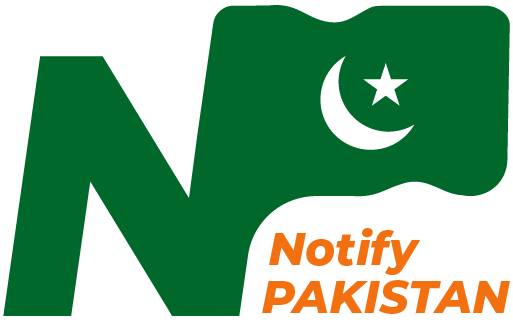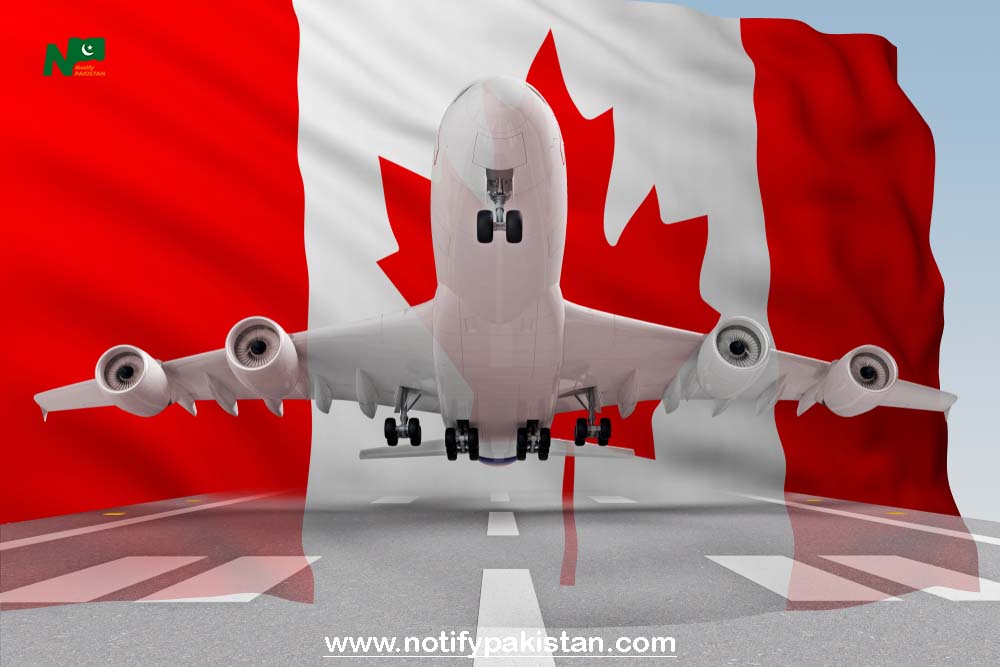This article provides a comprehensive overview of the 13 easiest ways to immigrate to Canada in 2023. Learn about the different programs and categories available, and how to apply.
Introduction:
Canada has set ambitious goals to welcome a record-breaking 465,000 new immigrants in the year 2023, marking a significant initiative to address the growing labor market shortage within the country. This move comes in the wake of similar efforts in the preceding years, where Canada had already established new annual records for permanent resident admissions in both 2021 and 2022.
Having surpassed its own benchmarks in recent years, Canada is poised to shatter those records once again in the next three consecutive years. 13 Easiest Ways to Immigrate to Canada in 2023 commitment reflects the nation’s proactive stance in utilizing immigration as a strategic tool to alleviate the challenges posed by an expanding labor market shortage.
The motivation behind this surge in immigration is grounded in Canada’s recognition of the vital role newcomers play in meeting the demands of its evolving workforce. As the labor market experiences a shortage, Canada sees immigration as a key solution to replenish and diversify its talent pool. The focus on immigration as a strategic response underscores the country’s commitment to sustaining economic growth and competitiveness.
This proactive strategy suggests that now is the best time to consider and apply for Canadian citizenship. The government’s commitment to boosting immigration welcomes those seeking new opportunities, a higher quality of life, and a chance to contribute to the Canadian economy.
These trends emphasize the necessity of considering Canada for employment, entrepreneurship, and family reunion for prospective immigrants. Canada’s resolve to shattering immigration records over the next three years strengthens its reputation as a nation open to diversity, creativity, and global contributions.
In essence, the confluence of Canada’s ambitious immigration targets, the demonstrated success in recent years, and the commitment to sustaining this momentum signals a unique and propitious moment for individuals considering the transformative journey of immigrating to Canada.
First, we present a brief introduction to the 13 Easiest Ways to Immigrate to Canada in 2023 in a table, and then we discuss each category in detail.
| # | Category | Program | Key Details |
|---|---|---|---|
| 1 | Permanent Residence | Express Entry | • Skilled Worker, Experience Class, Trades. • 83,000 High Skilled in 2023. • Occupation-specific draws. |
| 2 | Permanent Residence | Provincial Nominee Program | • 9 provinces, 2 territories. • 105,000 planned newcomers. • Streams for Express Entry. • Economic needs selection. |
| 3 | Permanent Residence | Quebec | • Controlled intake. • Focus on francophone immigrants. • Address labor shortages. |
| 4 | Permanent Residence | Employer-Driven | • Atlantic Immigration Program, others. • Targeted labor shortage initiatives. • Potential Municipal Nominee Program. |
| 5 | Business Programs | Start-Up Visa | • For business-minded. • Requires investor support. • 3,500 newcomers in 2023. |
| 6 | Business Programs | Provincial Business | • Under Provincial Nominee Programs. • Province-specific requirements. |
| 7 | Business Programs | Self-Employed | • Federal Self-Employed, Quebec programs. • Focus on cultural contributions. |
| 8 | Family Class | Spouses & Children | • Immigration Levels Plan. • 78,000 newcomers in 2023. • Spouse/partner streams. • Overseas adoption stream. |
| 9 | Family Class | Parents & Grandparents | • Lottery system. • 28,500 newcomers in 2023. • Challenges due to oversubscription. • Potential sponsor windows. |
| 10 | Temporary Residence | Study & Work Permit | • Route to PR for international students. • Competitive pathway. |
| 11 | Temporary Residence | Temporary Workers | • Foreign Worker Program, Mobility Program. • High/low-skilled, Seasonal Ag Workers, Live-In Caregivers. • Global Talent Stream for tech. |
| 12 | Temporary Residence | Buy A Business | • Options for business buyers. • Including Temporary Foreign Worker Program, Ontario Entrepreneur Success Initiative. • Changes in LMIA advertising. |
| 13 | Refugees | Refugee Immigration | • Prioritized. • 76,000 newcomers in 2023. • Investment in Mobility Pathways Project. |
This table provides a structured overview of the various immigration pathways to Canada in 2023, categorized by permanent residence, business programs, family class, temporary residence, and refugees. Each entry includes key details to help understand the programs better. Here is a complete explanation of all categories of 13 Easiest Ways to Immigrate to Canada in 2023.
Permanent Residence
Express Entry:
Express Entry stands as the primary method to move to Canada in 2023. It serves as the flagship selection system for the Federal Skilled Worker, Canadian Experience Class, and Federal Skilled Trades programs. Canada aims to welcome nearly 83,000 Federal High Skilled immigrants in 2023, increasing in the following years. Express Entry will also witness the introduction of occupation-specific draws, targeting specific economic labor shortages.If you want to know about Express Entry, click here.
Provincial Nominee Program:
The Provincial Nominee Program (PNP) is a substantial economic stream, expected to surpass Express Entry in 2023. With over 105,000 newcomers planned, the PNP operates in nine provinces and two territories. Provinces have specific streams for Express Entry, aligning with federal priorities. Applicants should consult occupation lists and streams, recognizing the difference between provincial and federal priorities.
Quebec:
Quebec maintains control over its economic immigration intake. The province emphasizes francophone immigrants and aims to limit total immigration to around 50,000, with 33,000 through economic programs. Candidates with a qualified job offer may see flexibility in francophone requirements, especially in the context of addressing chronic labor shortages.
Employer-Driven Pilot Programs:
Canada operates various employer-driven pilot programs addressing specific economic sectors or regions with labor shortages. The Atlantic Immigration Program, covering four Atlantic provinces, is notable. It includes streams for skilled workers and international graduates. Other programs like the Agri-Food Pilot, Rural and Northern Immigration Pilot, and Economic Mobility Pathways Project are employer-driven, requiring identification of labor needs by employers.
Business Programs
Start-Up Visa:
The Start-Up Visa program is crucial for business-minded individuals. To qualify, candidates with a business or business idea need support from designated investor groups, venture capital funds, or business incubators. Canada plans to welcome 3,500 newcomers through business programs in 2023, with the Start-Up Visa being a significant contributor.
Provincial Business Programs:
Provinces operate entrepreneur programs under their respective Provincial Nominee Programs, each with specific requirements related to the economic needs of the province or territory.
Self-Employed Programs:
Both the federal government and Quebec offer self-employed programs. The Federal Self-Employed Class targets those with relevant experience willing to make a significant contribution to Canada’s cultural, artistic, or athletic life. In Quebec, self-employed applicants create their own jobs through professions or commercial activities.
Family Class
Spouses, Partners, and Children:
The Family Class, which includes spouses, partners, and children, aims to welcome 78,000 newcomers in 2023. The spouse and partner stream allows applications from outside or within Canada. Spouses and partners may qualify for a work permit while awaiting processing. The program also includes a separate stream for overseas adoption.
Parents and Grandparents:
Canada’s Parents and Grandparents Program operates on a lottery system, with plans to welcome 28,500 newcomers in 2023. The program faces challenges due to oversubscription, and officials are exploring fair ways to select candidates. The program may open a new window for submission of interest to sponsor forms in 2023.
Temporary Residence
Study Permit and Post-Graduation Work Permit:
Canada offers a route to permanent residence for international students. With an expected 750,000 international students in 2023, it is the largest category of temporary residents. Students can come on a Study Permit and qualify for a Post-Graduation Work Permit, providing experience for immigration via Express Entry. However, it’s crucial to note the high competitiveness of this pathway.
Temporary Workers:
While Study Permit holders lead as the largest group of temporary residents, Temporary Work Permit holders remain significant at 750,000. Channels include the Temporary Foreign Worker Program (TFWP) requiring a Labor Market Impact Assessment (LMIA) and the International Mobility Program (IMP) for roles not needing an LMIA. The TFWP has streams for high-skilled workers, low-skilled workers, Seasonal Agricultural Worker Program, and the Live-In Caregiver Program. The Global Talent Stream under TFWP allows employers to access fast processing for certain technology occupations.
Get a business and move to Canada:
Candidates interested in buying a business and moving to Canada have options. The Temporary Foreign Worker Program and the Ontario Entrepreneur Success Initiative offer pathways, though recent changes removed exemptions for LMIA advertising requirements.
Refugees
Refugee Immigration:
Canada maintains a commitment to welcoming refugees as part of its global humanitarian efforts. Notable refugee groups include Syrians, Afghans, and Ukrainians. The 2023 Immigration Levels Plan allocates room for over 76,000 newcomers in the Refugee Class, with a recent investment in the Economic Mobility Pathways Project to bring skilled refugees to Canada.
This comprehensive overview provides insights into the diverse pathways available for 13 Easiest Ways to Immigrate to Canada in 2023, aligning with the country’s ambitious goals and addressing specific economic and humanitarian needs.
Conclusion of 13 Easiest Ways to Immigrate to Canada in 2023:
In concluding our exploration of the myriad ways to immigrate to Canada in 2023, it’s evident that the country is not just opening its doors but actively reshaping the immigration narrative. Canada’s ambitious plan to welcome 465,000 new immigrants signifies a strategic response to address its pressing labor market needs.
The pathways outlined, from Express Entry and Provincial Nominee Programs to Business and Family Class options, illustrate the comprehensive and inclusive approach Canada has adopted. The emphasis on specific draws, such as occupation-specific ones under Express Entry, showcases a nuanced understanding of economic demands.
The commitment to diversity is evident in programs like the Start-Up Visa and the welcoming stance towards refugees. Canada is not merely seeking to fill gaps in the labor market but to create a rich tapestry of cultures, skills, and contributions.
For those eyeing Canada as their destination, the conclusion is clear – the time is now. The government’s proactive stance, reflected in the sustained effort to break immigration records, presents a unique opportunity for individuals seeking a new chapter in their lives.
As we’ve detailed the nuances of each immigration category, it’s apparent that Canada’s vision goes beyond mere numbers. It’s about fostering a vibrant and dynamic society where every newcomer plays a vital role. Whether you’re a skilled worker, entrepreneur, or someone seeking family reunification, Canada has tailored pathways for you.
In essence, Canada’s 13 ways to immigrate in 2023 not only provide a roadmap for individuals but also signal a nation’s commitment to growth, inclusivity, and a future shaped by the contributions of a diverse global community.
Read more:
- Get Emirates ID in 24 Hours with ‘Fawri’ Service!
- Passport Printing Resumes in Pakistan After Lamination Paper Shortage
- Dual WhatsApp In One Mobile | The Secret Weapon for Managing Personal and Work Accounts
- WhatsApp New Feature | Send Once Voice Notes for Enhanced Privacy
If you’re interested in more updates on scholarships, admissions, or internships, click here.

